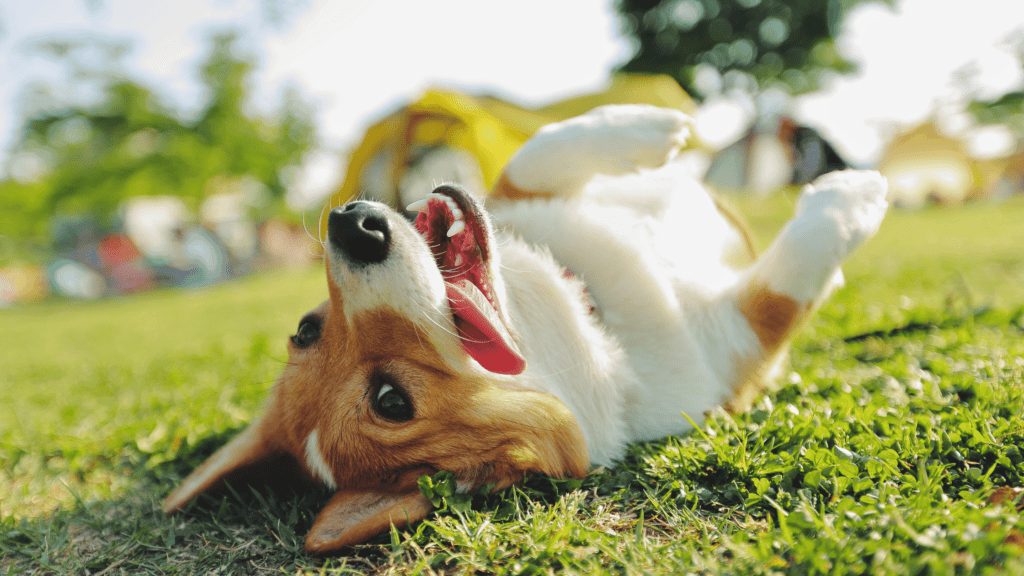Dogs, our loyal companions, bring boundless joy and companionship into our lives. Yet, beneath their endearing exterior lies a complex world of behaviours and communication.
Understanding what constitutes normal behaviour in dogs is fascinating and crucial for establishing a strong and harmonious bond with our furry friends.
In this comprehensive guide, we’ll delve deep into the intricacies of what is a normal dog behaviour, shedding light on various aspects that shape their actions and reactions.

The Social Nature of Dogs: Pack Mentality and Social Hierarchy
Dogs are descendants of wolves, pack animals by nature. This ancestral connection profoundly influences their behaviour.
Within a household, dogs often view their human family as their pack. Establishing a clear social hierarchy is a pivotal element in maintaining a balanced and well-behaved dog.
Signs of respecting the hierarchy include deferring to humans, following commands, and seeking permission for actions.

Communication Through Body Language- Tail Wagging, Ear Position, and More
A dog’s primary means of communication is through body language. Tail wagging, for instance, isn’t always a sign of happiness; its speed and direction convey different emotions. Similarly, ear position, eye contact, and facial expressions hold valuable clues to a dog’s mood and intentions.
As responsible dog owners, deciphering these cues enhances our ability to understand and respond appropriately to our pets’ needs.
Barking: Vocalization as Expression
Barking is a fundamental aspect of canine communication. While occasional barking is normal, excessive and persistent, barking might indicate underlying issues such as boredom, anxiety, or the need for attention.
By identifying the triggers and contexts of barking, we can address the root causes and guide our dogs towards more balanced behaviour.

Playful Behavior: Understanding the Joyful Canine Spirit
Play is essential to a dog’s life, fostering physical and mental stimulation.
Playfulness is exhibited through behaviours like bounding, chasing, and wrestling.
Engaging in play strengthens the bond between you and your dog and contributes to their overall well-being.
Recognizing the signs of playfulness and providing opportunities for interactive games can help channel their energy constructively.
Territorial Instincts and Marking Behaviors
Dogs have a natural inclination to protect their territory and mark their presence. This behaviour is deeply ingrained and often manifests as scent marking. While occasional marking is ordinary, excessive marking might signal anxiety or insecurity.
Addressing the root causes and providing a secure environment can help mitigate these behaviours and promote a more relaxed and confident dog.

Chewing: Nurturing the Need to Gnaw
Chewing is a common behaviour in dogs, particularly puppies, as they explore their world and soothe teething discomfort. Providing appropriate chew toys and regularly rotating them can prevent destructive chewing and safeguard your belongings.
Understanding the underlying reasons for chewing allows you to address this behaviour effectively and ensure your dog’s dental health.
Aggression and Fear: Navigating Complex Emotions
Aggression and fear-based behaviours can arise from various factors, including past experiences, genetics, and inadequate socialization. It’s vital to recognize the signs of aggression early and seek professional guidance to manage and modify these behaviours.
A well-rounded approach involving positive reinforcement training and desensitization can help your dog feel more secure and build confidence.
Separation Anxiety: Easing the Stress of Absence
Dogs are social animals, and being left alone can sometimes trigger separation anxiety. It can lead to destructive behaviours, excessive barking, and even house soiling.
Gradual desensitization, establishing a routine, and providing mental stimulation before departure can help ease separation anxiety and create a sense of security for your dog.

Final Thought
Understanding what constitutes normal dog behaviour is essential to responsible pet ownership. We can forge a deeper connection with our furry companions by delving into the intricate layers of social dynamics, communication, and emotions.
Each behaviour offers a glimpse into their unique personalities, from tail wags to territorial instincts.
As we navigate the complexities of their actions and reactions, we pave the way for a fulfilling and harmonious partnership with our beloved dogs.
